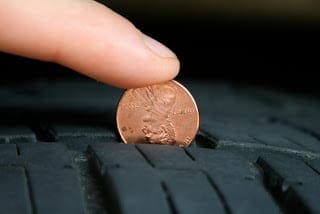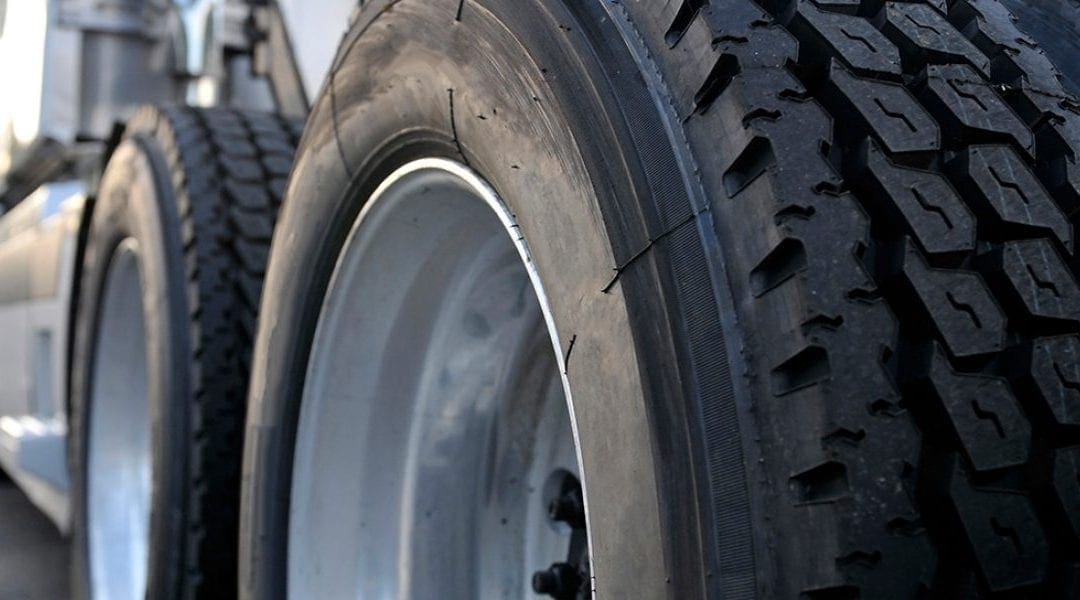Next to Fuel, Tires Have Been and Will Continue to Be the Number One Maintenance Issue Facing Fleets Today
Drivers can have an enormous impact on your tire expenses and their safety during a pre-trip inspection as well as while they are on the road. During the pre and post trip inspections, it is important for drivers to visually inspect tires for any sign of irregular wear, cuts, snags, and punctures. They should also report that information to the maintenance department either directly or through a DVIR, but what about checking the tire air pressures during the walk-around inspection? It does take time to check the air pressure on 6 to 18 tires and how does the driver know that the pressure gauge he’s using is even accurate? After checking the air pressure, it is also possible that a valve core can stick causing the tire to lose air.
The driver would need to know what the recommended air pressure is for steer, drive, and trailer tires. Many fleets have different specs for air pressure depending on wheel position. Even if the driver completes these checks, what if he/she finds that the inside dual drive tires are all 10? PSI is too low. If the driver is on the road, will they actually take the vehicle to a truck stop to get air? The driver does not own the vehicle so why should he care if the tire is 10 PSI underinflated. This is exactly why it is so important to educate your drivers upon hire and during employment about tire maintenance and safety. Most drivers have no idea that the tires on a tractor/trailer unit may have cost over $7,500.
During new driver orientation and safety meetings, drivers need to hear about tires and how they can influence:
- Safety of operating the CMV
- Tire removal mileage
- Fuel economy
- Retreadability
- Tire related roadside service calls
Drivers must fully understand that their jobs depend on helping their employer do everything in their power to get the most out of their $6000 tire investment. If the driver understands that there is a direct correlation between running tires underinflated and fuel economy, he/she could save the company close to $1,000 per year in fuel alone. If the driver, in a pre or post-trip inspection can identify a possible vehicle alignment condition based on steer tire irregular wear, that tractor could be fixed, and the tires saved from early removal. His driving habits matter as well. If the driver does not accelerate aggressively and makes smooth turns, tires will last a lot longer as the tread rubber will not be scrubbed off as quickly.
Striking curbs is also a leading cause of ending a tires life prematurely. Many fleets today recognize the role the driver can play in maximizing their tire budget. Most have some sort of incentive program for those drivers who can generate the most miles on their tires and can consistently get the best fuel economy by keeping their tires properly inflated ALL the time. Having a program to educate drivers on these issues can save your company in a very short time.
How To Measure Tire Tread Depth
 Tread depths need to be checked and recorded because DOT has a legal limit -4/32” for steer tires and 2/32” of rubber for drive and trailer tires. That means that if any spot in the major grooves of a steer tire are found to be 4/32” or less, that tire must be removed from service. However, it can either be retreaded or moved to the trailer and run down to 2/32″ minimum before entering the retreading process. Drive tires would be required to be removed from service or retreaded when any major groove reaches 2/32” of rubber to be safe. Most fleets have found over the years that running the tire down to 2/32”
Tread depths need to be checked and recorded because DOT has a legal limit -4/32” for steer tires and 2/32” of rubber for drive and trailer tires. That means that if any spot in the major grooves of a steer tire are found to be 4/32” or less, that tire must be removed from service. However, it can either be retreaded or moved to the trailer and run down to 2/32″ minimum before entering the retreading process. Drive tires would be required to be removed from service or retreaded when any major groove reaches 2/32” of rubber to be safe. Most fleets have found over the years that running the tire down to 2/32”
The last tip about measuring tread depth: never measure in the decoupling groove which is found in many steer tire designs to reduce irregular wear. This outside decoupling groove is sometimes known as a PDG groove (Pressure Distribution Groove) and they may be very deep or may be very shallow but it is not the same depth as the major tire grooves.
Originally Posted on the Idealease Safety Bulletin


